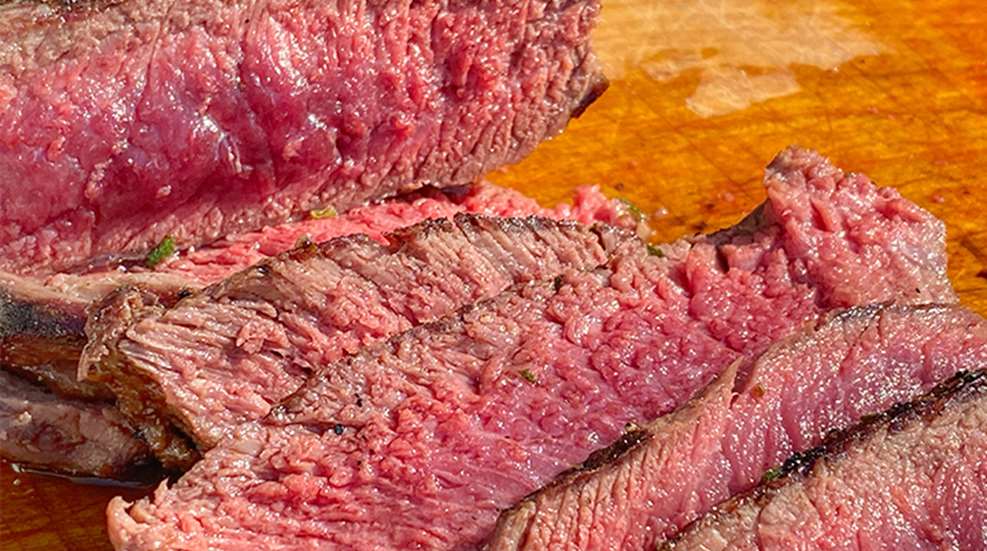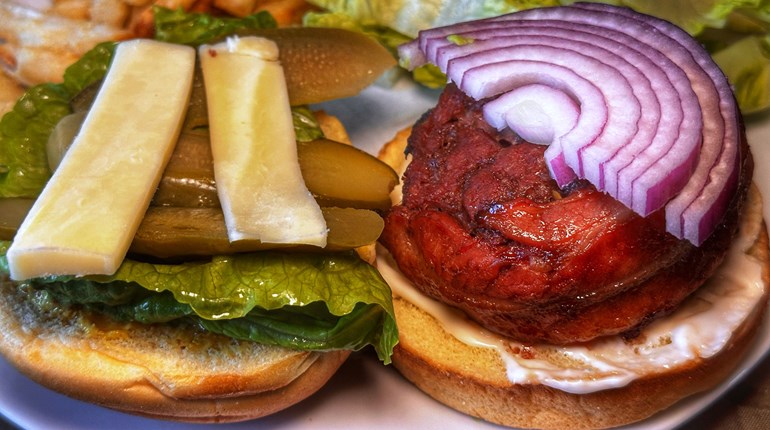
What is the perfect steak? For most, the perfect venison steak is cooked medium-rare, which will be tender and juicy. For most, it is a heavy sear on both sides of the meat, providing texture and flavor. The sear helps to seal and hold moisture in the center of the meat.
Which Cut is Best?
Whether working with deer, elk, moose, bison or caribou, prime cuts are always the best grilling steaks. The loin, marketed as New York strip on the bottom end, and rib steaks on the top end, is a favorite amongst hunters and usually referred to as backstrap. Top sirloin and sirloin tip steaks (cut from the large muscle of the hind leg) are also great and dominate the menu at most restaurants specializing in steaks. The sirloins are dense, flavorful and often done in a softball cut or used for unique servings.
Preparation
Steak is best when fresh, but as we are hunters, you’ll need to take those steaks from the freezer and allow them to thaw in a fridge prior to cooking. Remove the steaks from their packaging and allow any liquid to drain by setting meat in a colander placed in a bowl. Steaks should be at room temperature before grilling or frying. Any meat that is not at room temperature could have a cold center when cooked to medium-rare or even medium. A perfect steak should be warmed right through. Steaks cut about 1 inch thick are ideal, but this six-minute technique works well on smaller and larger cuts, too.
Marinades, Herbs and Spices
Olive oil is excellent for coating meat and holding spices and herbs. Garlic, pepper, rosemary, thyme, sage and other bold spices like smoked paprika are great in a marinade to bolster taste. And while I know some will balk, I recommend staying away from salt in your marinades as it can draw moisture from the steak when cooking. Salt can be added for individual taste when serving.
Cooking Surface
A barbecue grill or cast-iron frying pan is ideal for cooking steaks to perfection. Preheat the barbecue or grill to a minimum 500 degrees Fahrenheit or as high as 600 degrees Fahrenheit if you can do so safely. If using cast-iron, heat on high until a droplet of water dances and evaporates.
Time is Critical
A clean grill produces the best looking steaks, with even sear lines that char deep and distinct. With steaks at room temperature, seasoned and covered in olive oil, place them on the grill and close the lid. Use a timer and turn the steak at precisely three minutes. Add a dollop of butter to the seared side of the steak and close the lid. Cook the second side of the steak for three minutes and remove from the grill onto a plate. Place a dollop of unsalted butter on the second side of the steak and cover the plate with foil. Allow the steaks to rest for three minutes before serving. The steak will continue to cook during the resting period, and keeping it covered allows it to maintain moisture.
Butter
Wild game has little fat marbled through the meat or on the edges of the steak. Many hunters trim all fat off venison steaks, as it is tallow and not actual fat, which has a more robust musky flavor. Brushing with butter or olive oil makes up for the missing fat you would have on beef or pork. Adding the fat during and just after the grilling process will add flavor and moisture to your steak.
If you want to get creative, make compound butter by adding fresh herbs, spices or wine, and add them to the steak instead of unsalted butter.
Recipe: Bold Red Compound Butter
• ½ cup unsalted butter, softened to room temperature
• 1½ cups red wine
• 1 Tbsp fresh rosemary, chopped fine
• ⅛ tsp sea salt
• pinch of black pepper





































